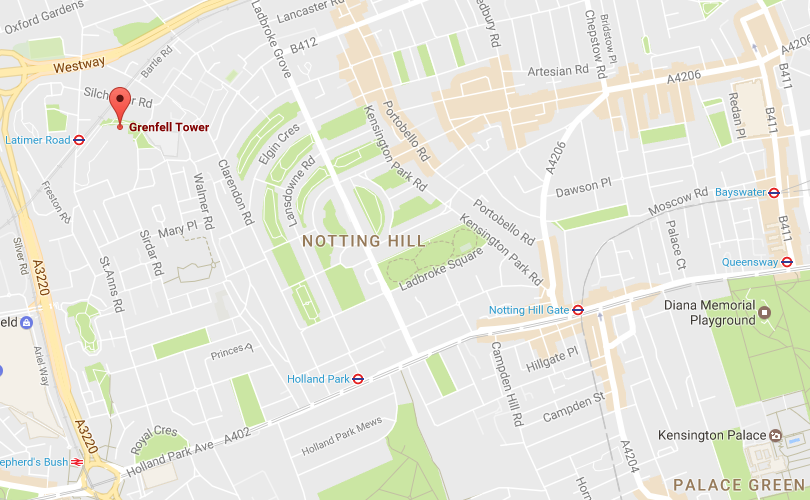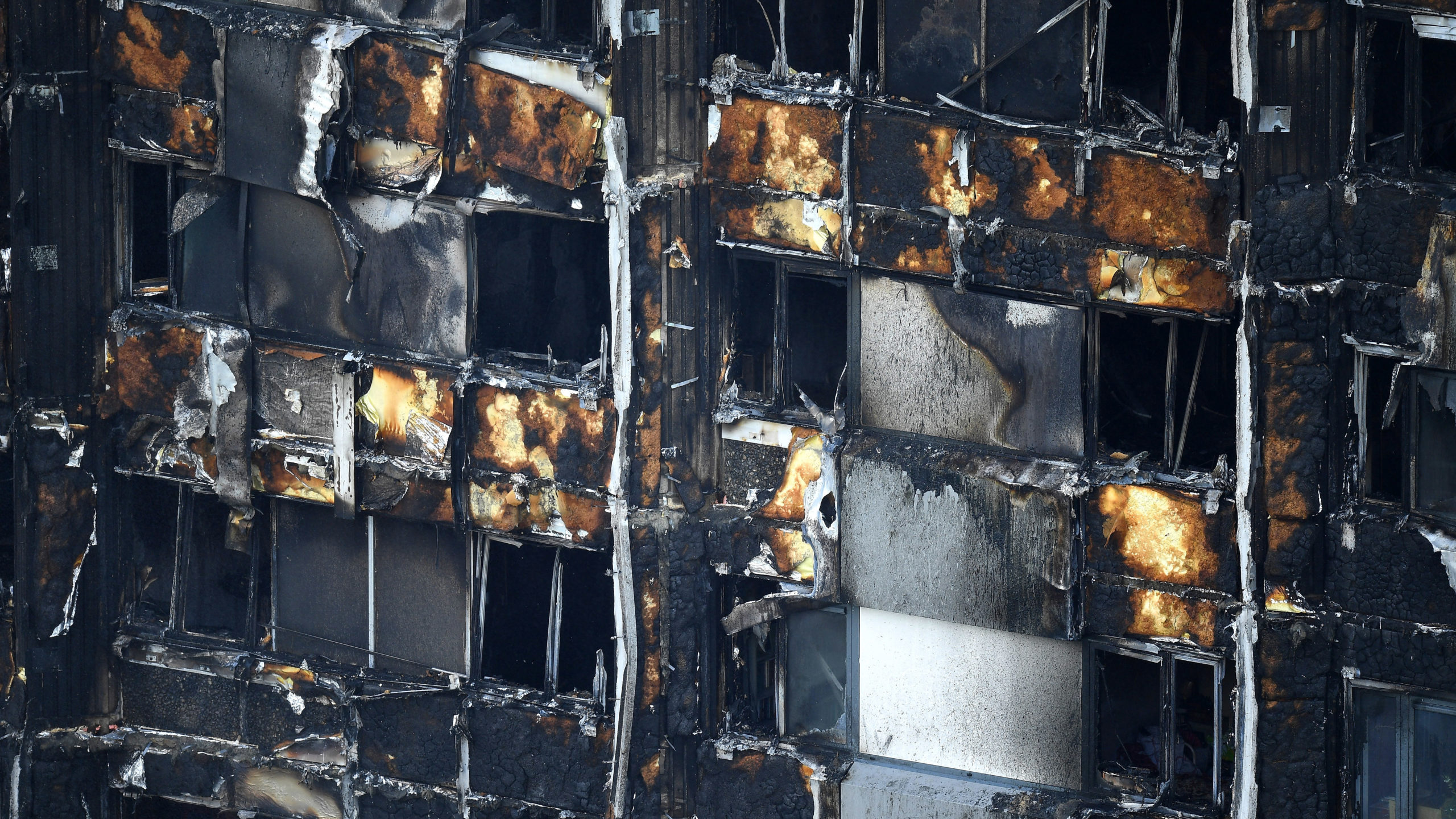Experts and politicians are pointing fingers in an effort to explain what caused the devastating Grenfell Tower fire in London that killed at least 12 and injured dozens more on Wednesday. Quite unfortunately, all fingers appear to be pointing in the same direction, at a new aluminium rainscreen cladding installed, in part, to make the building more attractive to wealthy neighbours in luxury flats nearby.
Photo: Getty
Grenfell Tower is part of an estate housing complex — that’s the British term for public housing project — in the Royal borough of Kensington and Chelsea. This area of London is famous for its tremendous disparity in wealth, since it’s home to some of the most valuable real estate in the world as well as some of the city’s poorest residents. Grenfell is where many of those poverty-stricken Londoners called home, and a group of residents now say their warnings of dangerous conditions “fell on deaf ears” for years leading up to the fire. A £8.6 million ($14.5 million) renovation wrapped up in May 2016, and now, it appears that some decisions made during that facelift may have fuelled this week’s fire in a very deadly way.
Part of the motivation for Grenfell’s renovation, planning documents suggest, was to make the tower look better to its neighbours. That document, obtained by The Independent, claims the addition of new aluminium cladding “will improve its appearance especially when viewed from the surrounding area”. It justified the choice of materials “to accord with the development plan by ensuring that the character and appearance of the area are preserved and living conditions of those living near the development suitably protected”. Those living nearby, of course, are some of the richest people in London. You’ll probably recognise the neighbourhood just to the south of Grenfell Tower from the ’90s Hugh Grant movie:

Image: Google Maps
Installing aluminium cladding isn’t inherently bad. The renovation detail was not only aimed at improving Grenfell’s appearance but also the building’s insulation. The space between the aluminium façade and the structure itself appears to have been stuffed with insulation. Fireproof insulation is expensive, and so some experts suggest that Rydon, the company responsible for the renovation, may have used cheap, non-fireproof insulation instead. This would have been a big mistake.
“[Cladding] produces a wind tunnel and also traps any burning material between the rain cladding and the building,” fire expert and surveyor Arnold Tarling told The Independent. “So had it been insulated per se, the insulation could fall off and fall away from the building, but this is all contained inside.”
Mike Penning, a member of Parliament and former fire minister, similarly said, “The cladding was clearly spreading the fire.”

Grenfell Tower’s scorched cladding and what appears to be insulation material. (Photo: Getty)
Another fire safety expert, Angus Law from the University of Edinburgh, told the press that reports of the Grenfell Tower bore “similarities with other fires that have occurred recently around the world”. One such fire was the New Year’s Eve skyscraper fire in Dubai, when flames spread up the side of the Address Downtown hotel at breakneck pace as debris rained down onto the streets below. It was later determined that the cladding used on the hotel “did not meet fire safety standards“. The misuse of aluminium cladding has also been named as a major cause for other, similar tower fires in Dubai.
It’s too soon to say what caused the deadly Grenfell Tower fire with any certainty. Rydon released a statement saying their work “met all required building control, fire regulation and health & safety standards”. The residents’ group that had complained for years about dangerous conditions — including “continuous power surges“, faulty wiring, and the lack of proper safety instructions — said in a blog post they had “predicted that a catastrophe like this was inevitable and just a matter of time”.
Some reports say the fire started with the explosion of an electrical appliance. But towers are generally designed to contain fires to small areas. They shouldn’t light up “like a nightdress,” as one bystander put it.
Nevertheless, the notion that the management company installed the aluminium cladding, in part, for cosmetic reasons is more than unsettling. Their is a distinct possibility that improper installation and flammable insulation played a part in the loss of homes and lives.
